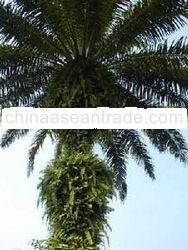Product detail:
This report presents a full view of China's palm oil market, provides analysis and suggestions on how to entering this big market in China. The report includes analysis on market shares, competition, key players, market segmentation, import & export changes, sales channel, buyer's behavior, entry barriers, industrial environment and policy trends; introduces the procedure for exporting products to China, Chinese inspection & standards system, a list of major importers & agencies, annual trade fairs in China; provides full forecast to 2010 and key statistical data.
Through this research report, readers will know who are the major players and supervisors in Chinas palm oil market, what are the market entry opportunities and barriers, where is the right place to sell products, how many countries / regions exporting their products to China and where they go
Since 1970s, China has no longer manufactured palm oil, and the domestic consumption all relied on importation. According to the information released by the State Administration of Grain, the annual consumption amount of vegetable oil per person has reached 14.2-14.6 kilos comparing with that of 2.2 kilos in the 1980s. This means that the domestic supply is far from enough to meet this huge demand and importation is needed to satisfy the demand.
The total amount of vegetable oil consumed in the year 2006 is as much as 20.5 million tons of which edible palm oil takes up 22% in the edible oil market with a consumption of about 4.51 million tons. As shown in the statistics by customs, the import quantity of palm oil was 4,320,000 tons in 2005, which increased sharply to 5,140,800 tons in 2006, 19% higher compared with the same time of the previous year. The total import value of palm oil in 2006 came to USD 2.297 billion, which was 29.16% higher compared with the same time of the previous year,accounting for 75.7% of the import quantity of edible oil, a new record of China imported palm oil quantity was set again. Malaysia and Indonesia are the two largest manufacturers and exporters of palm oil in the world, which have been also the main origins of China imported palm oil products. As far as import value is concerned, Malaysia has solid preponderance ranking the first with a sum of USD 1.551 billion in 2006, which was 27.68% over the previous year, accounting for about 67.53% of the total export sum of China imported palm oil; in 2006, China imported palm oil products from Indonesia with a sum of USD 0.713 billion, which was 27.45% more than the previous year, accounting for about 31.05% of the total import sum of China imported palm oil ranking the second. The import value from only Malaysia and Indonesia accounted for 98.58% of total China import sum. The imported palm oil products are sold as the mingling oil of food frying oil and small-packaged vegetable oil after refining and processing by domestic enterprises of processing edible vegetable oil.
According to the prediction of China Grain Reserves Corporation, the share of palm oil in domestic edible oil market will still keep increasing to 24% in 2007. If calculating in the way that the consumption of vegetable oil in China keeps an annual growth rate of 10%, the consumption of vegetable oil (including biological fuel) in China will be about 322,500,000 tons in 2007. If calculating with the proportion that the consumption of palm oil accounts 24% in that of vegetable oil, that is to say, the demand for palm oil is predicted to be 7,740,000 tons, which means a large consuming market for foreign palm oil manufacturers to fulfill.
As far as the consuming cycle is concerned, Chinese attach much importance to traditional festivals, therefore, festivals and holidays are the busy seasons of restaurant and food industries, the consumption of palm oil increases consequently. Especially the forth and first seasons including New Years Day and spring festival are the peak period of palm oil consumption.
As far as the main consumers are concerned, urban residents are also the main consuming group. Refined palm oil is main used to be mingled in concocted oil, salad oil and other small-packaged edible oils in China edible oil processing industry. Currently, China urban residents mainly consume small-packaged refined oil, while residents in countryside mainly consume refined oil and second-class oil. In view of the disparity in purchase power, the number of urban residents consuming in restaurant is obviously more than that of residents in countryside, therefore, the latent proportion of palm oil consumption in restaurant industry is grown.
As far as the consuming trend is concerned, the consuming demand of edible vegetable oil entirely tends to be diversified, subdivided and high-qualified. As shown in the information from State Grain Ministry, although currently the small-packaged oil which represent safety, health

















